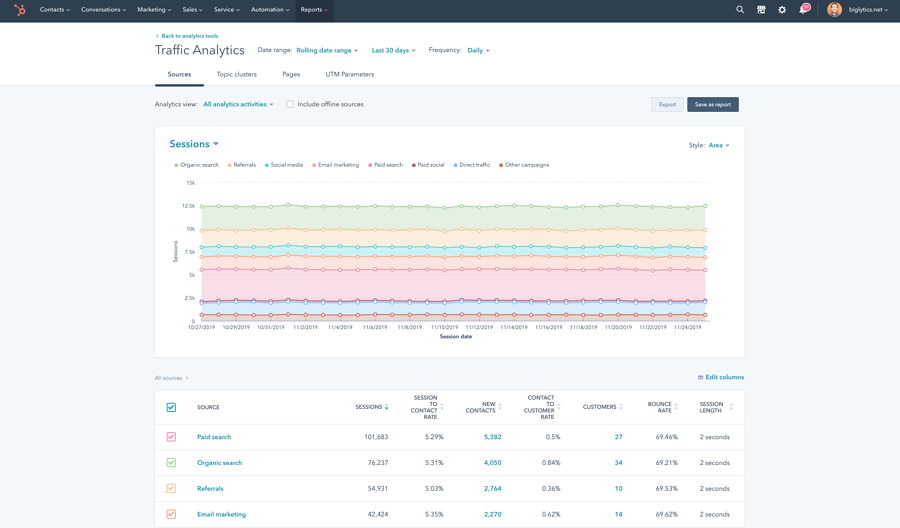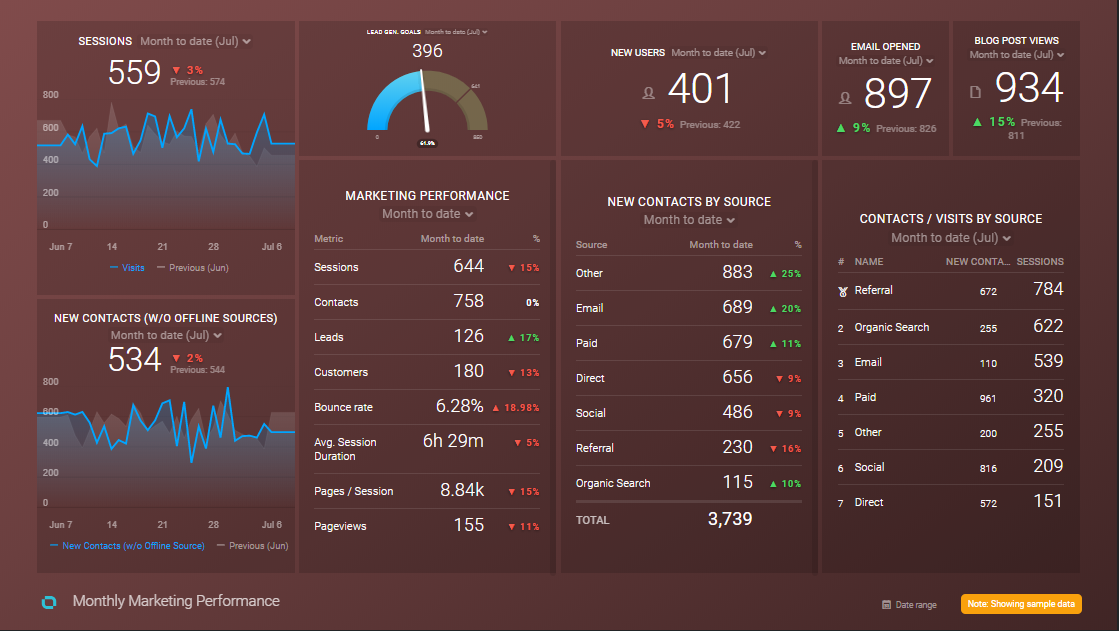-
Digital Marketing
We help you to use your digital potential. For a strong positioning, more visibility and more leads.
Get Growth ready
With the BEE.Transformance model, we bring continuous and profitable growth to your company. A new mindset for your team.
Industries
We transform your challenges into opportunities through the experience we have gained from projects in these industries.
-
HubSpot Services
As a HubSpot Diamond Partner, we help you implement your digital growth strategy with a focus on performance - by implementing and integrating new and existing systems as well as 3rd party apps.
HubSpot Thought Leader
As a HubSpot Diamond Partner with +50 certifications, host of the HubSpot User Group Zurich, HubSpot Trainer and HuSpot User Champions, you have access to in-depth HubSpot expertise.
HubSpot Solutions
The BEE.Theme offers you more creative freedom than any other theme on the market. Whether you're a beginner or a professional, a creative mind or a digital agency - with the BEE theme, you can easily unleash the maximum power for your pages in HubSpot CMS.
-
BEE.Blog
Knowledge around digital marketing, digital sales, technology, data intelligence and employees.
Knowledge Base
Pure knowledge: everything essential concentrated, compact, digitally prepared for you and ready to download.
What is inbound?
The most effective way to successfully combine digital marketing and digital sales.
-
BEE.Team
The BEE.Performers: many different characters - with one thing in common: the fascination for a digital world.
References
More than 100 large and small companies have already started with BEE: to more visibility, more performance, more growth.
Invest
Participate in the growth of BEE and become part of the BEE Growth Story by purchasing Digital Share Tokens.
We're hiring
Become a BEE.Performer! Are you ready for your own transformation?
What You Need to Know About HubSpot Revenue Attribution
If you put 1 Euro into a machine and got 2 Euro back, you'd keep putting your money in that machine, right? That's the essence of why marketing and sales professionals are so keenly interested in revenue attribution. We all want to know which activities help us win and close deals the fastest and which ones bring us the highest value leads.
For those using HubSpot with Enterprise Marketing Hub licenses, you're in luck. Your CRM can help you discover which landing pages, blog posts, and marketing emails are making your campaigns financially successful.
In your HubSpot accounts, navigate to Reports > Reports, click Create Report, then select Attribution. Scroll down to Revenue, and you’ll be prompted to choose the report type you may be interested in or simply Create a new report from scratch.

What is HubSpot Revenue Attribution?
HubSpot Revenue Attribution is essentially the reporting features that show you which interactions create contacts, deals, and, ultimately, revenue. By setting up your reports correctly and choosing the right revenue attribution model, HubSpot can help you understand how every email blast, social ad, or website click is actually turning into real money in the bank. It allows you to study interactions, interaction sources, interaction types, and times, providing you with actionable intelligence to course-correct or optimise specific processes for enhanced velocity and lead quality.
What Do HubSpot Attribution Reports Show?
Each touchpoint in your buyer's journey has a desired outcome. HubSpot's attribution reports help you understand how these touchpoints contribute to the final result, whether that's generating leads, closing deals, or something else. Here's what you can generally expect:
Channel Effectiveness
Understand which channels have the most impact (e.g., social media, organic search, paid search, email).
Campaign and Content ROI
Assess individual marketing campaigns and find out which content assets within those campaigns were influential in generating leads, conversions, and revenue.
Customer Journey
Review each touchpoint the customer interacted with before making a purchase and discover which activities influence conversion the most.
Multi Touch Attribution
For a more nuanced understanding, multi-touch attribution models show how multiple interactions contribute to a sale or conversion over a period of time rather than attributing the outcome to the last touchpoint before conversion.
First and Last Touch Attribution
These models help you identify the first and last touchpoints that contributed to a conversion, offering insights into how customers first find you and what finally convinces them to convert.
Sales Activities
If your company uses the HubSpot Sales Hub, you can track the impact of sales actions such as calls, emails, and meetings that influence deals.
If you're already applying best practices when generating HubSpot reports, Revenue Attribution reports are a game-changer for focusing on the bottom line. Unlike standard reports that track metrics like engagement or click-through rates, Revenue Attribution reports provide granular insights into how each marketing and sales activity directly contributes to revenue. This allows for more targeted resource allocation and better alignment between sales and marketing teams.
Limitations of HubSpot Attribution
Your HubSpot CRM is a powerful tool, but it has its limitations. Human error is often the most common reason why reports aren’t accurate. It’s important to upskill users and promote best practices while also having a well-integrated tech stack. Let's dive deeper into some areas where you might encounter constraints:
Data Quality
If your team inputs incomplete, inaccurate, or outdated data into HubSpot, your attribution reports won't be reliable.
Complex Customer Journeys
Multi-channel, multi-device behaviours can add layers of complexity that are hard to encapsulate fully. Since your buyer’s journey isn’t linear, you may have trouble trying to fit it into a linear revenue attribution model.
Integration Gaps
If your business uses multiple platforms for different functions, they must be fully integrated into HubSpot to ensure your attribution report doesn't miss key data points. And remember, offline activities aren't automatically tracked, so this information needs to find its way into the CRM.
Time Lag
Not all customers make purchasing decisions within the timeframe you anticipate. If your reporting window is too short, you may not capture the full influence of earlier marketing efforts.
Resource Intensive
Attribution reporting needs to be set up, monitored, and analysed correctly to be genuinely useful. Smaller businesses or teams may need a dedicated data analyst, making it tricky to leverage the power of these reports.
Cost
Advanced revenue attribution reporting in HubSpot is reserved for Enterprise tier subscriptions, which can be a limiting factor for smaller businesses.
Learning Curve
Although HubSpot is incredibly user-friendly, understanding and interpreting attribution data requires specialised expertise.
As we’ve already mentioned, smaller businesses without Enterprise may be on the back foot when it comes to HubSpot revenue attribution reporting, but other specialised tools like Google Analytics, Mixpanel, Kissmetrics, Wicked Reports, and Looker can help you achieve similar insights into revenue attribution. These platforms offer a range of customisation options and models, allowing you to make informed decisions for your business without the need for an Enterprise-level CRM.
Using Revenue Attribution to Create Alignment
For marketing teams, revenue attribution reports are golden. They allow you to pinpoint the impact your campaigns and efforts make, giving you a strong position from which to claim, retain, or expand your portion of the company's budget.
For sales teams, these reports provide a deeper understanding of your customer's behaviour, helping you fine-tune your strategies and tactics to close deals more effectively.
If your business struggles to create alignment between sales and marketing, effective revenue attribution analysis is the key to helping these two departments collaborate and plan together. Accurate data enables both sales and marketing to improve their processes objectively and grow harmoniously.
Conclusion
In a data-driven world where your competitors are taking every measure to optimise their buyer journeys, analysing revenue attribution should be a top priority. Business leaders want accurate insights to understand where strategies are bringing results and where they're falling short.
At BEE, we're keen to help our clients make data-driven decisions using an iterative, practical approach that's designed to scale at any size organisation. We can improve how you engage with your audience to positively affect metrics and enhance the efforts you make to reach your revenue goals.
So, remember the old saying, "You can't argue with the data." When sales and marketing have an accurate picture of how leads are generated and turned into cash flow for the business, everyone starts to sing from the same song sheet. If you’d like some help making revenue attribution part of your regular reporting, let’s have a conversation. We can help you utilise HubSpot’s powerful reporting features and guide you on the best practices to analyse results and make impactful decisions on the back of the data your business generates. Speak to an expert at BEE today.
Related Posts

Customer Reactivation: Why this strategy is so beneficial
Manuela Krapf | 26 Jan 2023
Acquiring new customers can be a costly endeavour for businesses, but losing them is even more expensive. That's why you should really view your existing customers as an ...
reading time: 9min
Zum Blog

HubSpot Reporting: Best Practices and Things You Must Know
Yvette Veigel | 15 Sep 2022
Sales and marketing reports are powerful tools you can rely on when making essential business decisions and planning for the future. Each campaign you launch opens the ...
reading time: 10min
Zum Blog

Improved HubSpot Reporting with Databox
Katrin Zimmermann | 15 Dec 2022
Your business collects data from so many different sources. It's the blessing and the curse of the digital age we find ourselves in. On the one hand, you have more ...
reading time: 7min
Zum Blog
